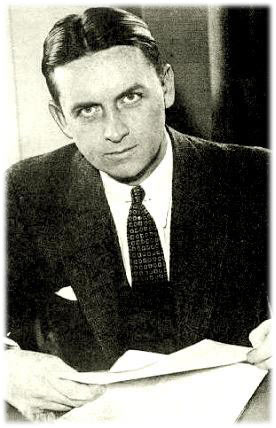 In the four years between September of 1934 and April of 1938, fear gripped the city of Cleveland, Ohio. A serial murderer roamed the streets preying on the poor transients that made their home in the shanty town of Kingsbury Run on the shore of the Cuyahoga River. This individual embarked upon a killing spree that lasted four years and left five women and seven men brutally murdered and dismembered around Cleveland. “The Butcher of Kingsbury Run” would become another of history’s sensationalized, unidentified killers befitting of the ranks of Jack the Ripper, the Zodiac killer and the murderer of Elizabeth Short, a.k.a. “The Black Dahlia”.
In the four years between September of 1934 and April of 1938, fear gripped the city of Cleveland, Ohio. A serial murderer roamed the streets preying on the poor transients that made their home in the shanty town of Kingsbury Run on the shore of the Cuyahoga River. This individual embarked upon a killing spree that lasted four years and left five women and seven men brutally murdered and dismembered around Cleveland. “The Butcher of Kingsbury Run” would become another of history’s sensationalized, unidentified killers befitting of the ranks of Jack the Ripper, the Zodiac killer and the murderer of Elizabeth Short, a.k.a. “The Black Dahlia”.
By most accounts, the “Torso Murders” began in September of 1935 when the bodies of two male victims were discovered in Kingsbury Run. Both of the men had been decapitated and one was identified as Edward Andrassy, a local street thug. There were some investigators in Cleveland who believed the murders had begun a year earlier when a female body was discovered floating in Lake Erie at Euclid Beach. The “Lady of the Lake” was found decapitated and could not be identified. Investigators in the case would later associate the discovery of the Lady of the Lake with the discovery of the seventh victim whose body was also found at Euclid Beach twenty-nine months later.
The years of the torso murders contained the darkest and most gruesome crimes Cleveland would ever see. Several of the victims had been decapitated where they stood, but others, investigators believed, had been killed, decapitated or dismembered, drained of blood, and then thoroughly cleaned at an undiscovered location before being dumped in Kingsbury Run. Both the Sheriff of Cuyahoga County, Martin O’Donnell, and Cleveland’s Public Safety Director, Elliot Ness (The Untouchables), had different theories about the perpetrator’s motives and methods. O’Donnell believed that the gruesome crimes were being committed by someone in Kingsbury Run who could blend back into the landscape after killing and beheading his victims, or someone who had a “laboratory” near Kingsbury where he could take his abducted victims. The sheriff had two of his detectives searching for the location of the killings but found nothing that would lead them to the Butcher. The sheriff then focused his attention on Frank Dolezal, who confessed to killing Florence Polillo, a forty year old prostitute and the third victim. It was learned, through the investigation, that Polillo frequented a saloon that had been a popular spot for the only other two identified victims, Rose Wallace (Victim #8) and Edward Andrassy (Victim # 2) . It was later discovered that the confession had been beaten out of Dolezal and that his descriptions of the crime did not match up to the condition in which Polillo’s body had been found. Dolezal recanted his confession and hung himself in jail before he could go to trial.
Elliot Ness believed that the killer was an individual with some medical training who would be found among Cleveland society. He also believed that the killer was a large man, able to overpower his victims quickly. At one of the “on site” murders, a large footprint, later identified as a size twelve shoe, was found on the ground around the victim. He put three of his best people on the investigation. One of them, Virginia Allen, uncovered Dr. Francis Sweeney as a possible suspect. Sweeney had been in the medical field as far back as the First World War and suffered from severe mental illness. Ness personally interviewed Sweeney, a large man with size twelve shoes, but could not get a confession or denial from him regarding the murders. Sweeney would eventually fail two lie detector tests, however, the machines and tests were in their infancy and not admissible as evidence. Ness believed that there was not enough evidence to hold or charge Dr. Sweeney. He would later recount the story in an interview with journalist, Oscar Fraley. Ness noted that the killings stopped after Sweeney had himself institutionalized and would say that he “drove out” the Mad Butcher of Kingsbury Run.
Many others in the law enforcement and historic research communities do not believe that the torso murders ended, or even began with Sweeney. Four decapitated and dismembered bodies were found in a swampy area near New Castle, Pennsylvania in the years prior to 1935 and three bodies were found near McKees Rocks, Pennsylvania in the spring of 1940. One male victim was discovered in New Castle in 1936 during the height of the Cleveland torso murders leading most investigators to believe that the Butcher of Kingsbury Run was, as Sheriff O’Donnell believed, someone who could blend into the transient population and was connected to the Pennsylvania murders by the railways that ran throughout the region.
The Butcher of Kingsbury Run has been blamed for murders dating from 1921 to 1950 and has even been accused, by some investigators, of the 1947 killing of Elizabeth Short, the Black Dahlia. Through all of the conjecture, the Butcher has, in the spirit of Jack the Ripper and Zodiac, kept his identity and his motives secret and will forever remain an unnamed individual in the strange history of America.
